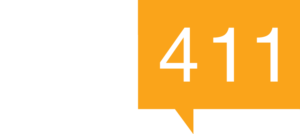Organizational change is inevitable, but with it comes the unknown. Without a clear road ahead, employees can easily fall into a state of anxiety about their jobs if there is no clear strategy for success in place. In a...
It seems like every company is racing for the highest productivity levels. After all, how else are we supposed to stay competitive in today’s market? But employee productivity isn’t as easy as snapping your fingers and watching the numbers...
From Ford to John Deere, to Harley Davidson, it seems that there is another large corporation walking back their diversity, equity, and inclusion (DEI) initiatives every week. With so many against it, HR teams must remember that a feature...
Thanks to the COVID-19 pandemic, the workforce has changed substantially, and even the rise of RTO mandates can’t seem to shift it back. A report from The Conference Board reveals that 87% of HR professionals experienced positive effects from...
Improving employee retention is a hot topic in HR circles, especially in today's dynamic work environment where flexibility and employee expectations are continually evolving. Let’s dive into innovative strategies that can significantly boost retention rates, all while keeping things...
Dive into the 2024 SHRM Employee Benefits Survey, a treasure trove of insights on the top employee benefits across the U.S. This annual survey, powered by data from HR professionals nationwide, shines a spotlight on six key benefits categories...
Mental health in the workplace is a pressing concern for HR professionals. Grasping the complexities of how stress and mental health challenges impact employees is essential for creating supportive work environments. Here's a comprehensive look at why this issue...
PwC's Global Workforce Hopes and Fears Survey 2024 unfurls a tapestry of insights, painting a vivid picture of a workforce at the cusp of significant change and increasing workplace stress. As the global corporate landscape continues to evolve rapidly,...
Microfeminism, a new trend gaining traction from TikTok to corporate offices, presents a dynamic approach to bridging the gender gap in professional settings. This strategy involves intentional, minor actions—whether it's the inclusive language we adopt or the equitable acknowledgment...
HR professionals hold the key to unlocking a vibrant and resilient workforce. By seamlessly integrating strong Employee Value Propositions (EVPs), fostering dynamic HR and marketing collaborations, offering impactful education benefits, and cultivating a thriving learning culture, organizations can pave...














